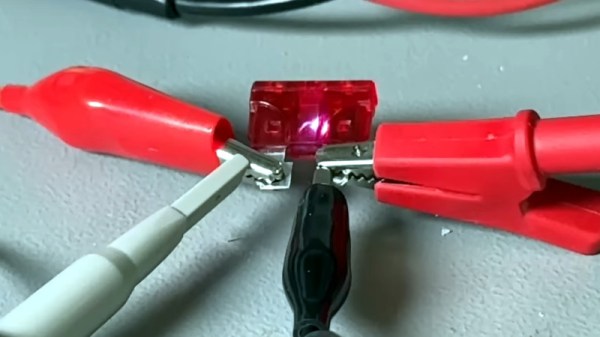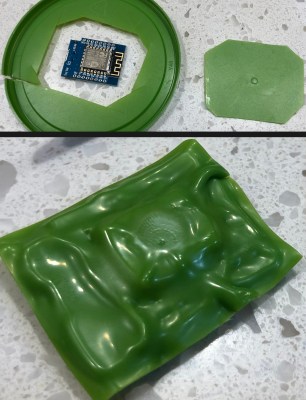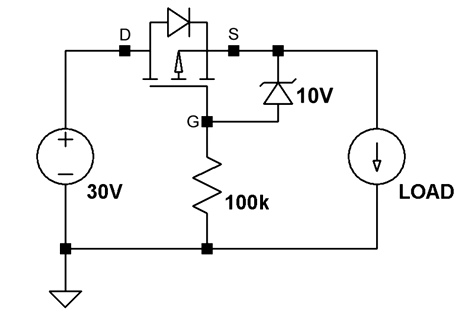When a fuse is fitted in a power rail, it gives the peace of mind that the circuit is protected. But in the case of some cheap unbranded fuses of the type that come in kits from the usual online suppliers that trust can be illusory, as they fail to meet the required specification.
[Andreas Spiess] has used just these fuses for protection for years as no doubt have many of you, so it was something of a shock for him to discover that sometimes they don’t make the grade. He’s taken a look at the issue for himself, and come up with an accessible way to test your fuses if you have any of those cheap ones.
It’s an interesting journey into the way fuses work, as we’re reminded that the value written on the fuse isn’t the current at which it blows but the maximum it’s intended to take. The specification for fuses should have a graph showing how quickly one should blow at what currents above that level, and the worry was that this time would be simply too long for the cheap ones.
In the video below the break, he looks at the various set-ups required to test a fuse, and instead of a bank of large power supplies, he came up with a circuit involving an 18650 cell and three one ohm resistors in parallel. The resulting 1/3 ohm resistor should pass in the region of 10 A when connected across the 18650, so with a 5 A fuse in that circuit and a storage ‘scope he’s able to quickly test a few candidates. He found that the cheap fuses he had were slower to blow than a Bosch part but weren’t as worrisome as he’d at first thought. If you have any of these parts, maybe you should take a look at them too?








 your magic smoke. Even if you are lucky, stray parts are the root of boundless malfunctions from disruptive to deadly. [TheRainHarvester] shares his trick for
your magic smoke. Even if you are lucky, stray parts are the root of boundless malfunctions from disruptive to deadly. [TheRainHarvester] shares his trick for 












